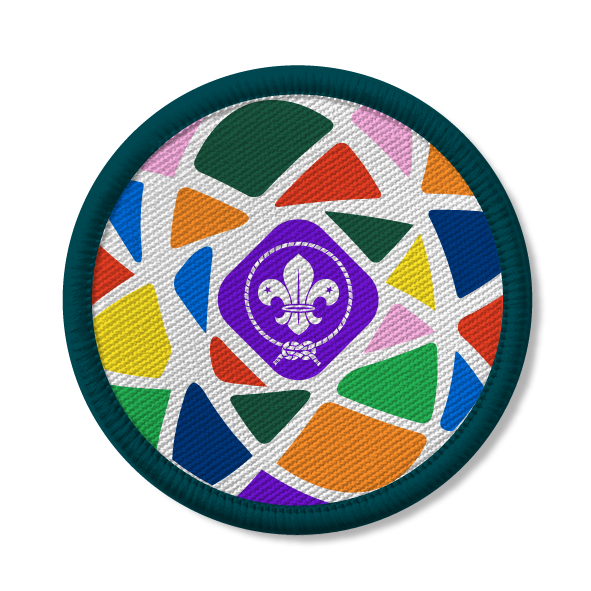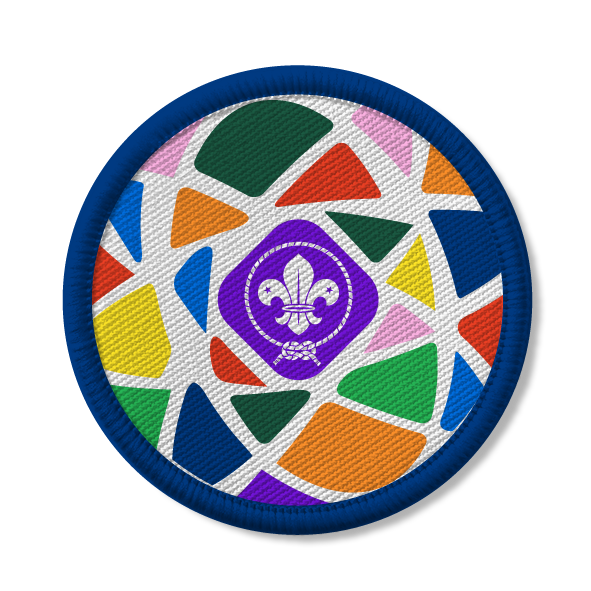
Explore the shore
You’ll need
- Pens or pencils
- A4 paper
- Camera or phone
- Disposable gloves
- Weather appropriate clothing
- Binoculars
Before you begin
- Decide where you’ll go. The UK has lots of coastline to choose from, so pick a particular part of the shore to explore.
- Check whether you need to get permission before you visit. Some areas of the coast are usually off-limits because they’re wildlife reserves or private land – if you’re keen to visit, contact the governing body for the area and ask if you’d be able to visit or have a tour.
- Check (then double check) the Tide Times. Try to arrange to start your activity just as the tide begins to go out so you’ll be able to see more, and there’s less risk of getting trapped by the tide.
- Make sure everyone knows when and where to meet, and what they should bring with them.
How to be by the seaside
- The person leading the activity should make sure everyone knows how to stay safe and protect the coastline.
- Divide into teams of about six people. Each team should have an adult leader or helper.
- The person leading the activity should set boundaries, so everyone knows how far they can explore. They should also explain if there are any areas people need to be extra careful (for example, roads) or avoid entirely (for example, protected or dangerous areas).
See more than shore
- Everyone should set out to explore the area. They should keep an eye out for interesting wildlife and do their best to answer the questions in Things to look out for.
- Each group should record what they find so they can show others and learn more about it later. It’s up to them how they record it – they could draw, write, take photos, or record audio or video.
Coastal recap
- Before they leave the shore, everyone should make sure they’ve not taken anything they shouldn’t have from the coastline or left anything behind.
- Everyone should leave the shore, and gather together somewhere away from the rising tide where they won’t disturb wildlife.
- Everyone should share their favourite finds and anything that surprised them.
Sea the problem
- Everyone should decide how they’ll share their findings. For example, they could write a letter to the local authority that manages the beach – they could use the information everyone gathered to track the life on the seashore and check where human activity’s causing damage.
- Everyone should share their findings, including things like maps to show where wildlife was spotted and copies of their notes, photos, drawings, or recordings.
- Stick in your teams and with your adult. The weather and tides can change quickly, so it’s important to stay together to stay safe (and so you don’t miss it if anyone sports anything really cool).
- Tread slowly and quietly. Lots of wildlife is shy and prefers to stay hidden, so moving slowly and quietly gives you a better chance of spotting things before they run for cover.
- Look where you’re going and move carefully to avoid hurting wildlife or hurting yourself on slippery seaweed or rocks.
- Put back anything you pick up (unless it’s litter). Wildlife use rocks, shells, and rotting wood to build their homes – you don’t want to be responsible for chaos in the crab community.
- If you find litter that you can pick up safely (with gloves if possible), put it in a bin, and wash your hands. Don’t touch anything sharp or heavy – let the person leading the activity know about it so they can tell whoever’s in charge of the area.
- If you want to remember something, take a photo or draw it. It’ll be useful when you want to remember the details of what you spotted – you could even label your drawings, for example, to remind you of colours.
- Don’t approach seabirds or larger animals (such as seals). Bigger animals don’t always run away. Sometimes they can be aggressive and bite. Lots of animals are also protected from disturbance by the law. Admire them from a distance, with binoculars if you have them.
- Don’t climb cliffs or go into sea caves. They can be unstable or slippery, and you could fall or be trapped by the changing tide.
What’s the shore made of?
- For example, it could contain mud, sand, pebbles, smooth rocks, or jagged rocks.
- Are there cliffs? What are they made of? If you’re not sure, describe them so you can find out later.
What plants can you find?
- What’s the largest plant you can find (for example, a tree)?
- Are there grasses, reeds, or shrubs?
- What marine plants have washed up (for example, seaweed)?
- Can you find driftwood or signs of old trees?
Other than the sea, what water is there?
- Are there rivers, streams, ponds, or rock pools?
What large animals can you spot?
- Depending on where you are, look for seabirds, seals, dolphins, and sea otters.
- You may even see other inland animals venturing out towards the coat (though this is rare).
What small animals can you find?
- Here, ‘animals’ means anything living that isn’t a plant, so it includes insects, crabs, and fish.
- Where are smaller wildlife? Can you different find different things living in rock pools, shallow water, and sand? Don’t disturb them!
What evidence of human activity is there?
- Are there structural things like artificial sea walls or sea defences?
- What about signs of industry, for example, harbours or fishing huts?
- Is there litter?
What effect do you think human activity has on the wildlife?
- How does litter affect wildlife? Animals can get stuck on or in it and be hurt or killed. Think about what happens if it gets washed out to sea, too.
- Is there any evidence of oil or other hazardous waste spilling into the sea and polluting the water?
- What impact does tourism have? Large numbers of visitors can bring litter and noise.
- Can you spot any large ships or boats creating their own waves as they travel through the water? This is called wake – it can disturb animals or plants that live close to the surface and can make the sea choppy and unsettled.
Reflection
This activity was about valuing the outdoors. Were people used to visiting the seashore, or was it a new environment? What different wildlife did they spot? Oceans contain more than 228,450 known species of life, and it’s estimated that there could be another two million that science doesn’t know about yet. How did the seashore feel different to other outdoor areas? People could think about how the temperature or wind felt different, or the different smells they noticed.
This activity was also about being responsible. How did people do the right thing during the visit? Perhaps they helped to pick up litter or left a small animal alone even though it was really tempting to pick it up to see it better. Humans have a huge impact on oceans and beaches: nearly a third of all carbon emissions are absorbed into the oceans. How could people do their best to take care of the ocean?
Safety
All activities must be safely managed. You must complete a thorough risk assessment and take appropriate steps to reduce risk. Use the safety checklist to help you plan and risk assess your activity. Always get approval for the activity, and have suitable supervision and an InTouch process.
- Outdoor activities
You must have permission to use the location. Always check the weather forecast, and inform parents and carers of any change in venue.
- Animals and insects
Be aware of the risks before interacting with animals. Be aware of anyone with allergies, and make alternative arrangements for them.
- Gardening and nature
Everyone must wash their hands after the activity has finished. Wear gloves if needed. Explain how to safely use equipment and set clear boundaries so everyone knows what’s allowed.
- Adventure
This activity has specific rules and systems to make sure it’s managed safely. Take a look at adventure activities for more guidance.
- Phones and cameras
Make sure parents and carers are aware and have given consent for photography.
- Near water
Manage groups carefully when near water. The guidance on activities near water will help you to keep your group safe.
If you know what species people are likely to find, why not challenge groups to find a list of animals and plants? You could also encourage people to identify what they find in a more detailed way, for example, looking into differences between species.
- Make sure the seashore you visit is accessible for everyone. You may need to make sure the terrain is suitable, research beaches with step-free access, and think about transport links too.
- If anyone finds crowds or noise overwhelming, you may want to find a quieter, less crowded beach. This will also give you a better chance of spotting wildlife.
All Scout activities should be inclusive and accessible.
If anyone found any particularly interesting plants or animals, they could get stuck in to some research for other requirements of their Scout Naturalist Activity Badge.
If people spotted ways that human activity impacted wildlife, they may want to take action. For example, people could contact local authorities or action groups and tell them about their concerns.
Let anyone with more marine knowledge share their sills with the rest of their group. It’s up to everyone how they record what they find, and what exactly they do with the information afterwards.


